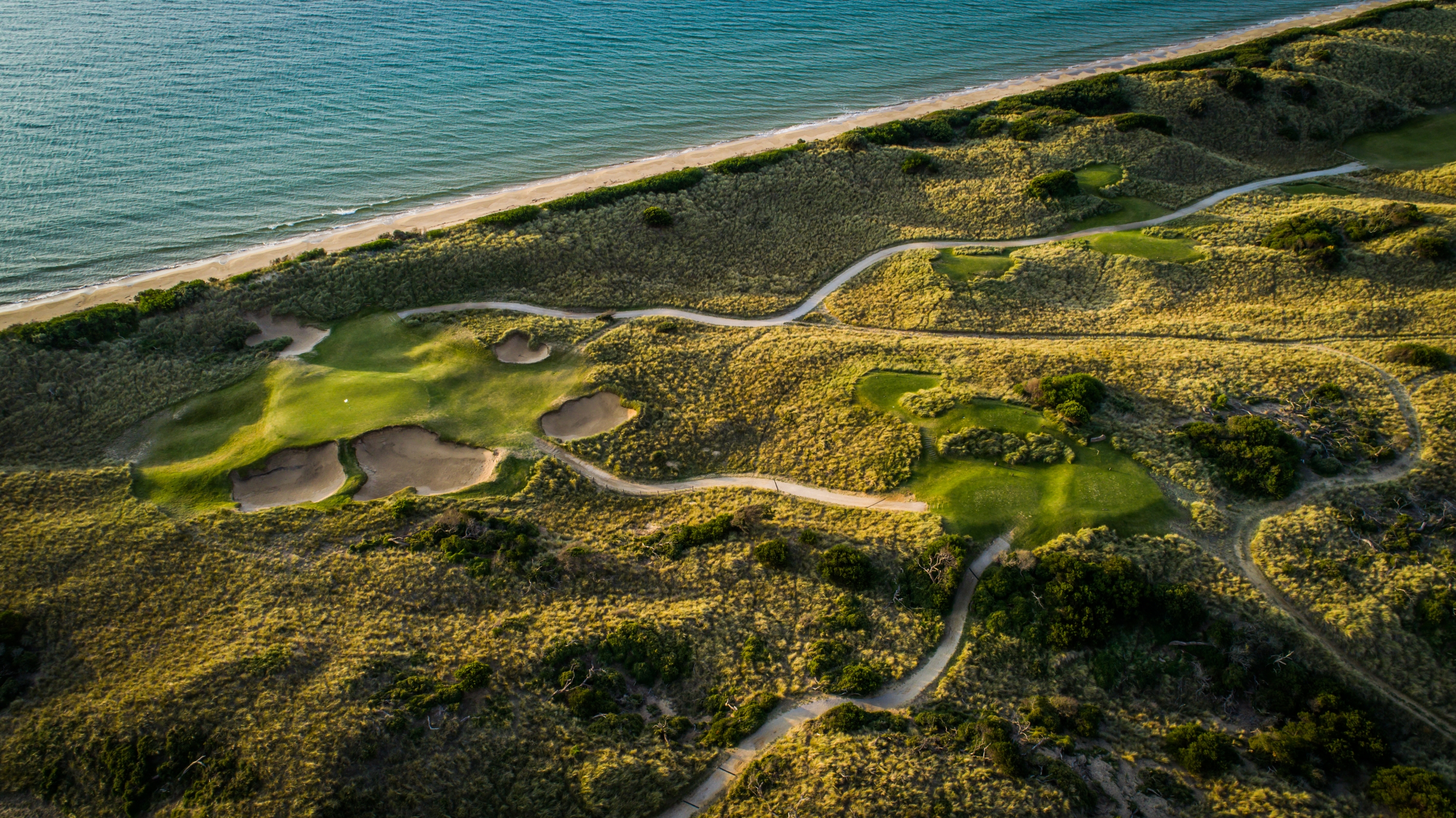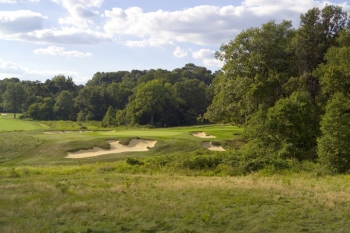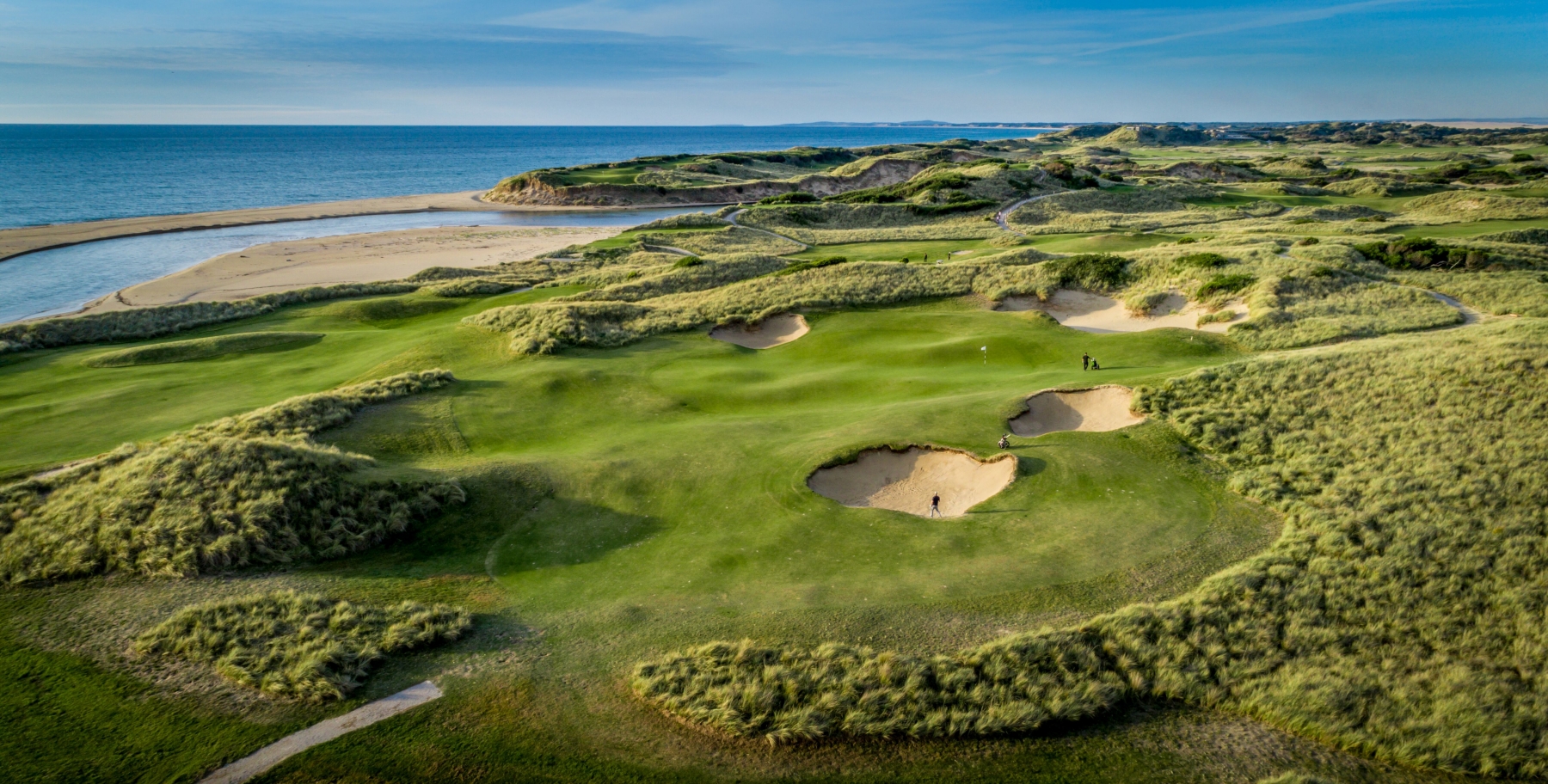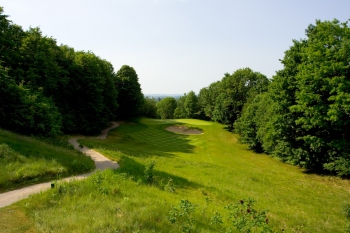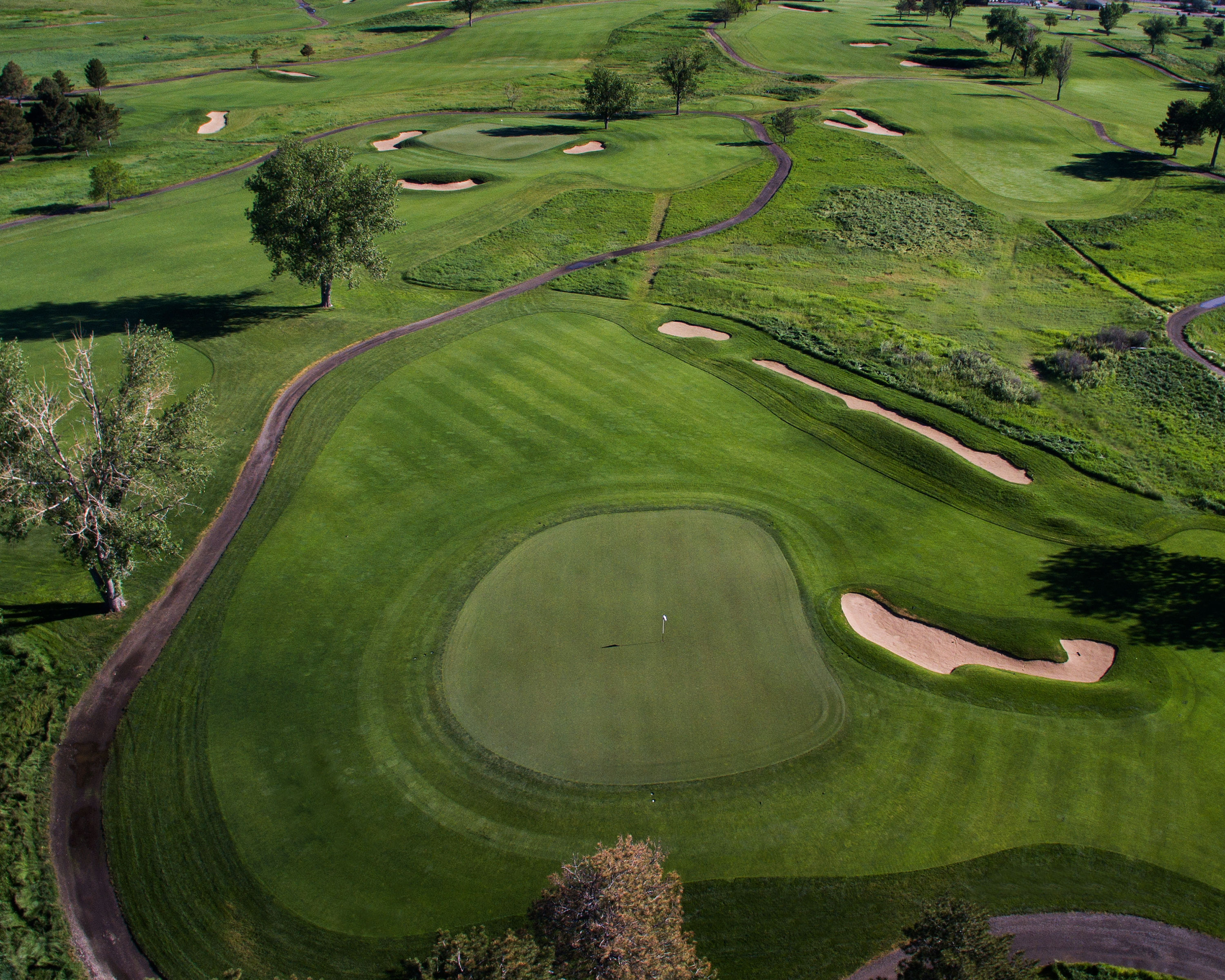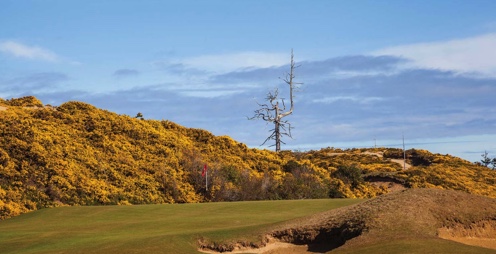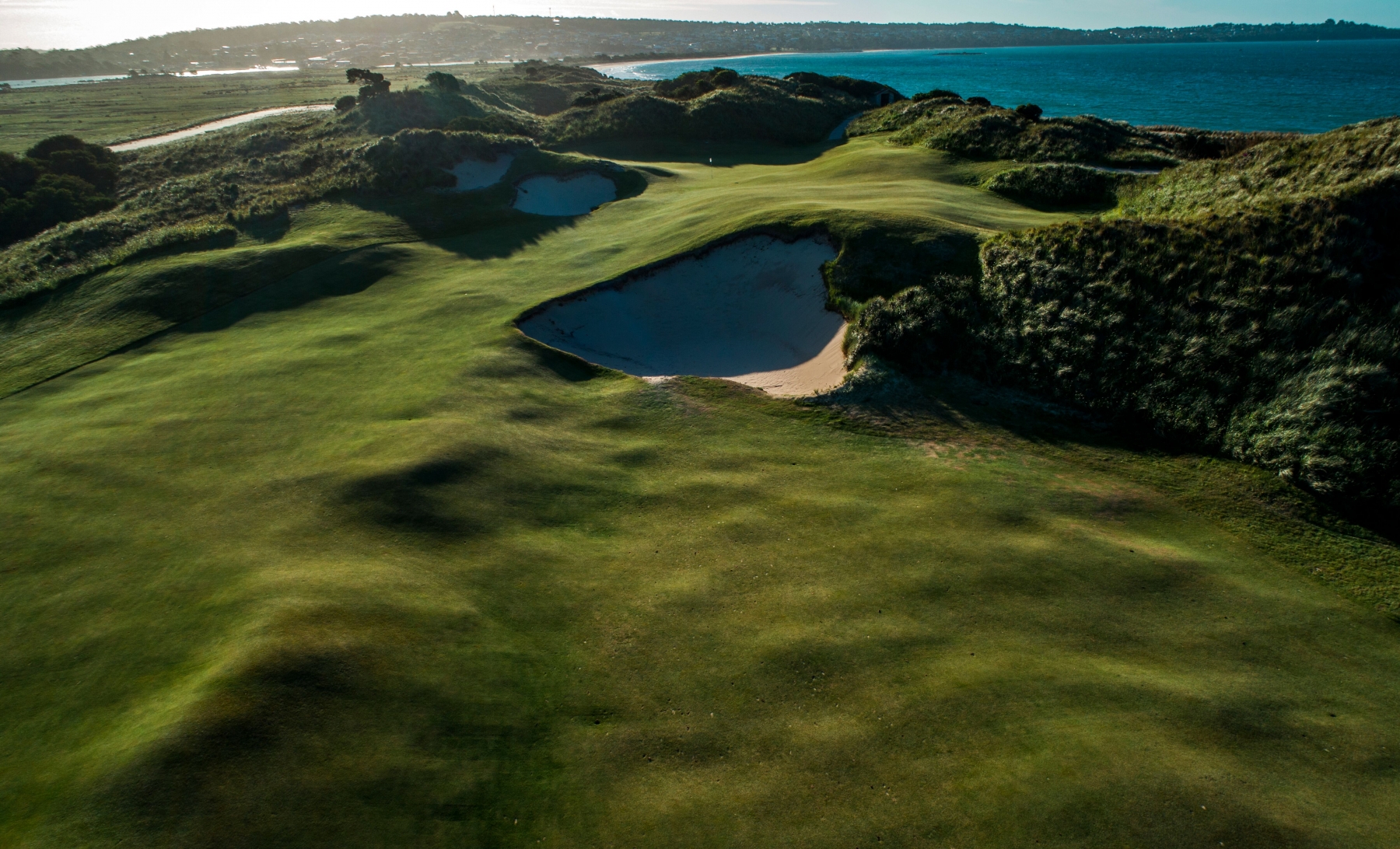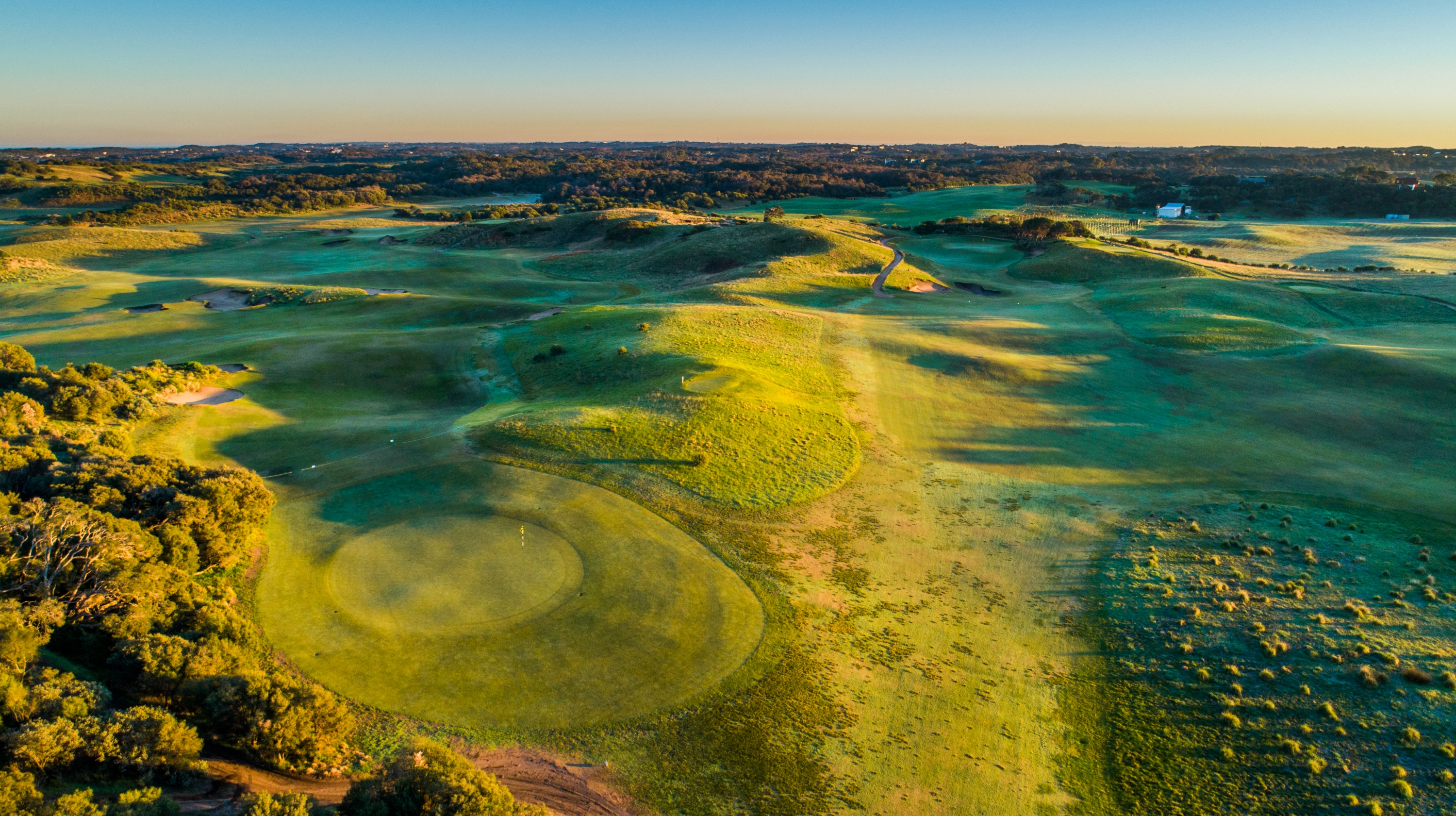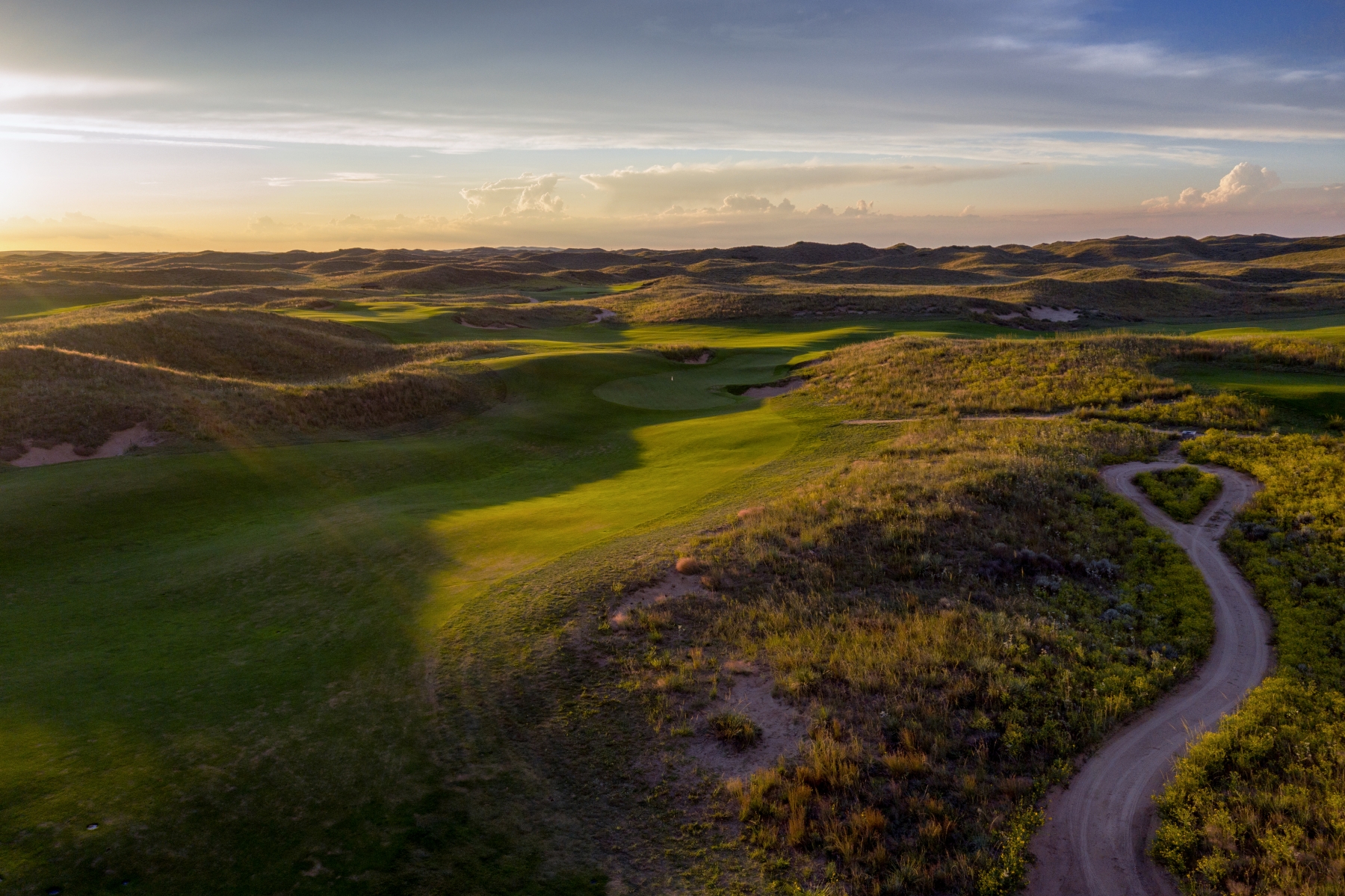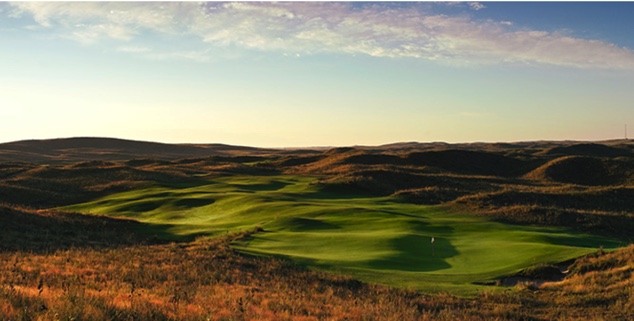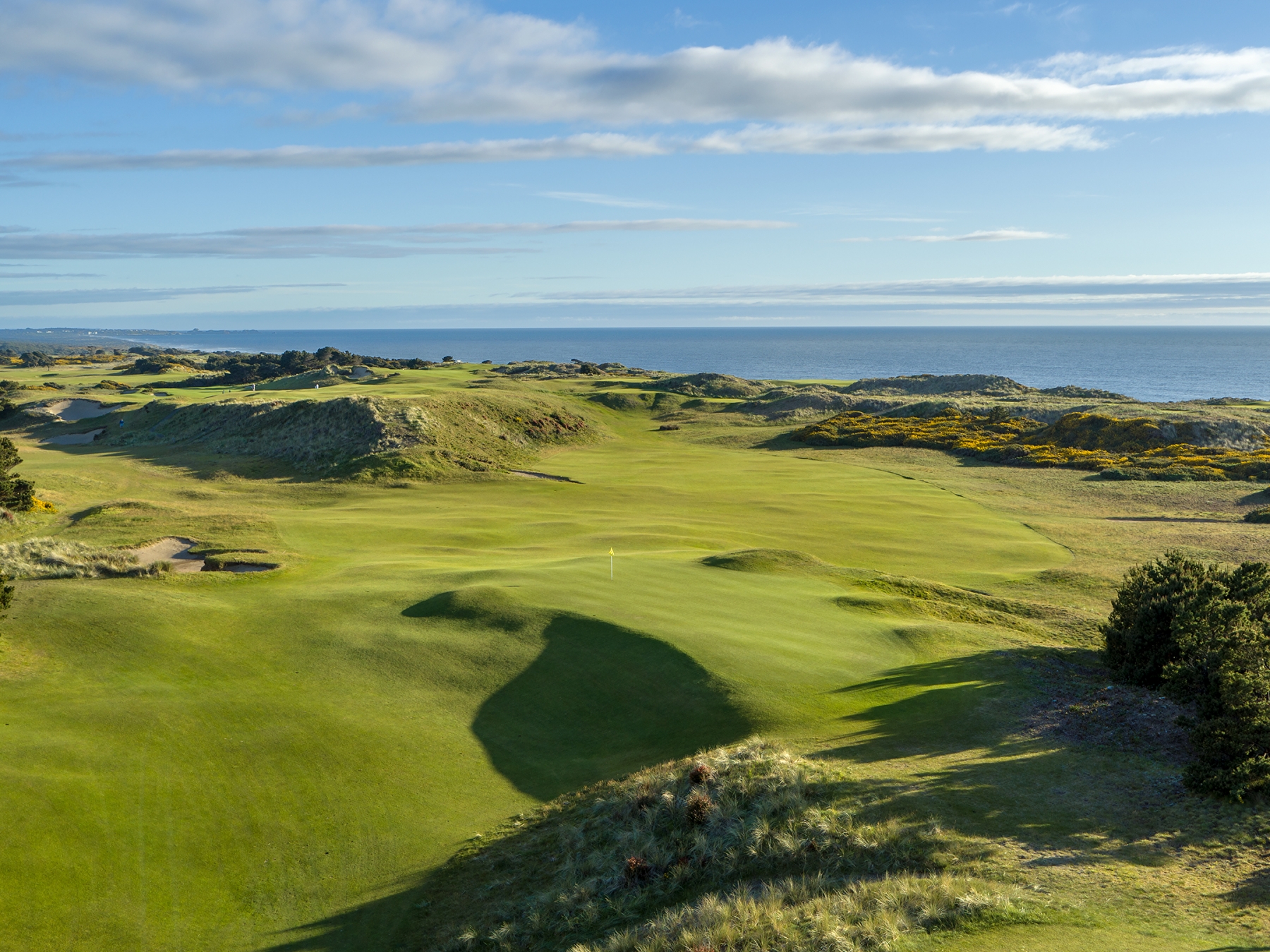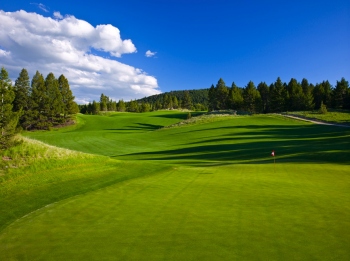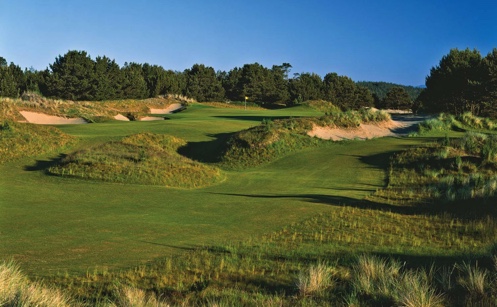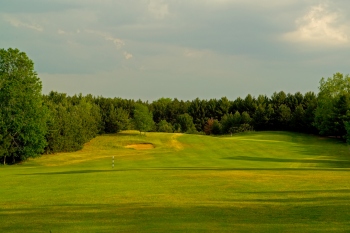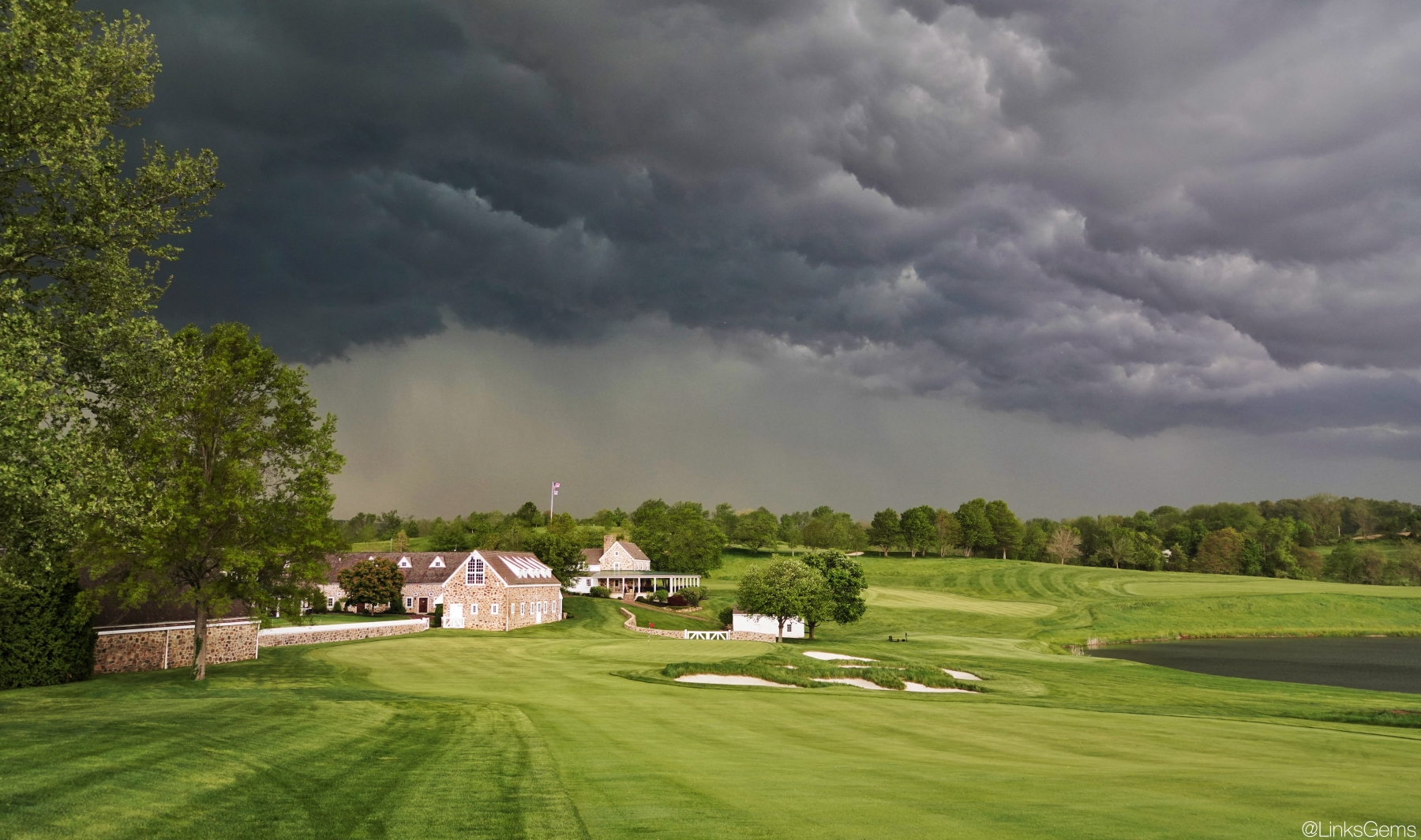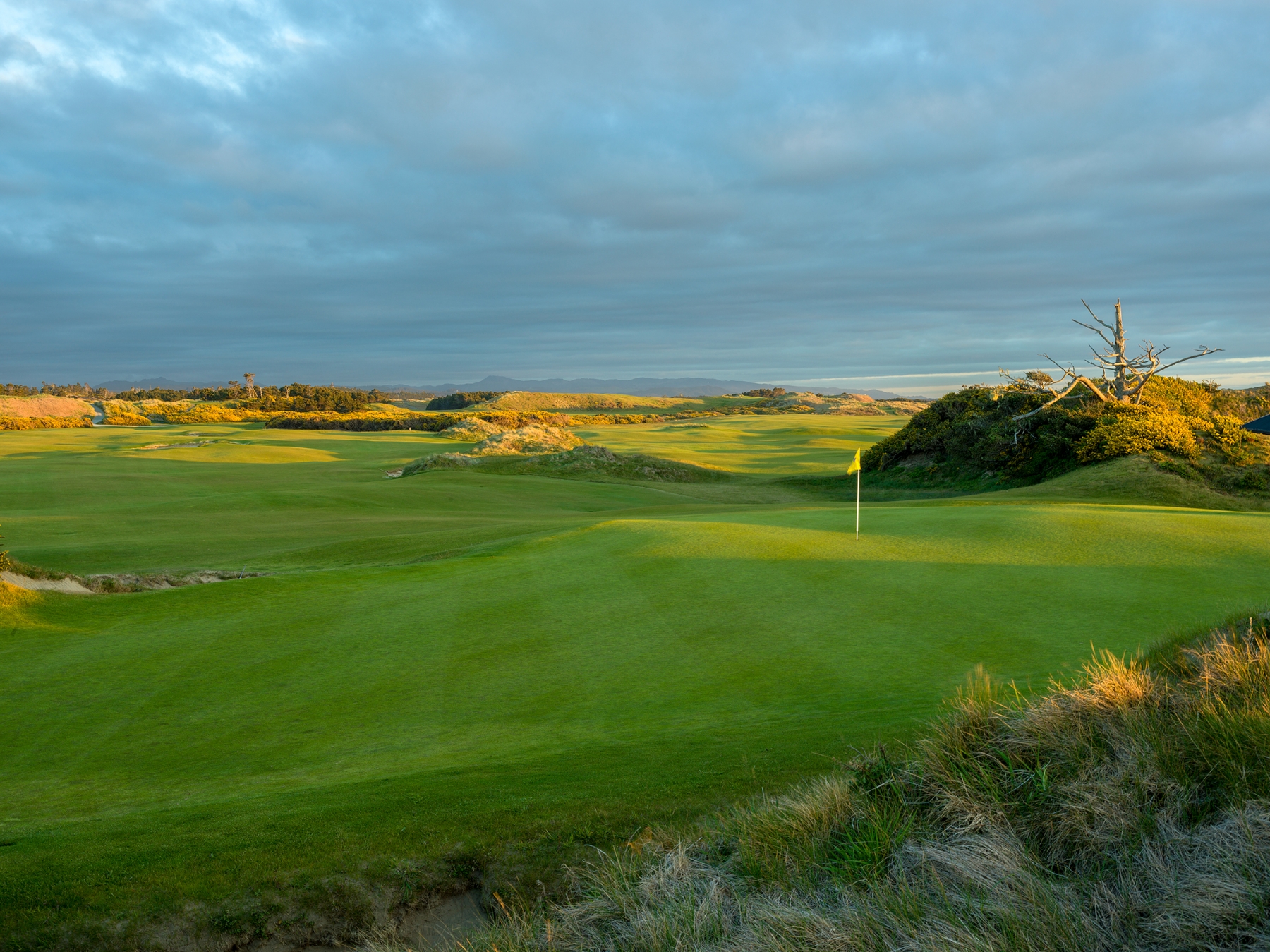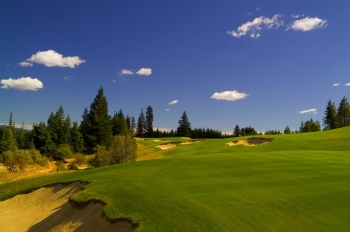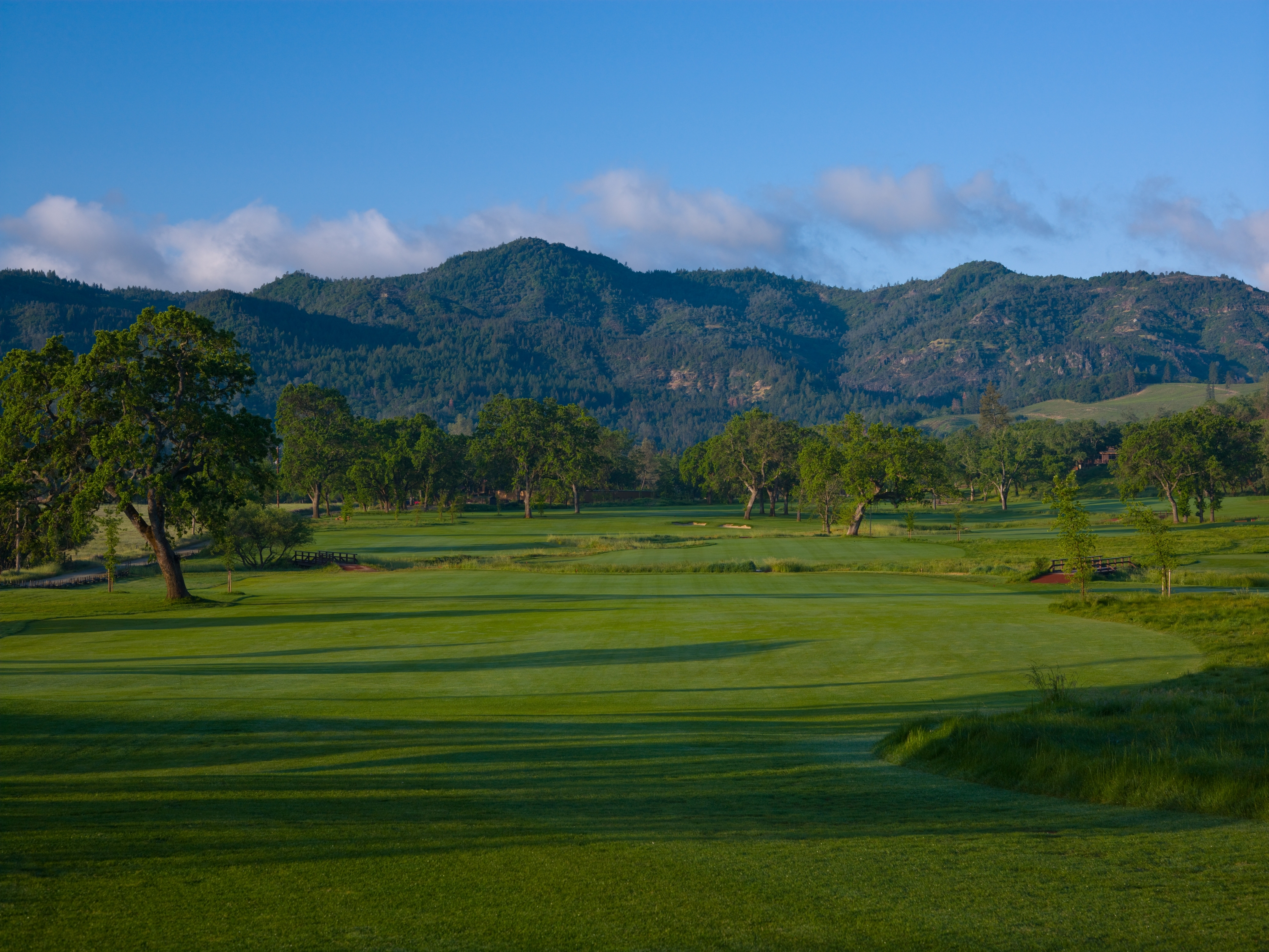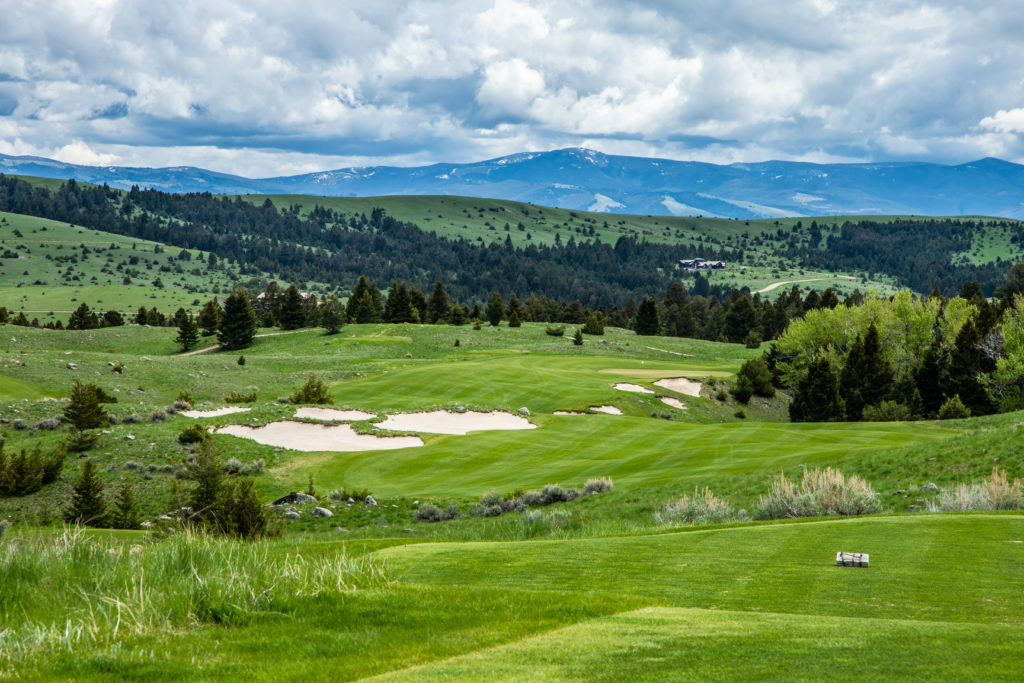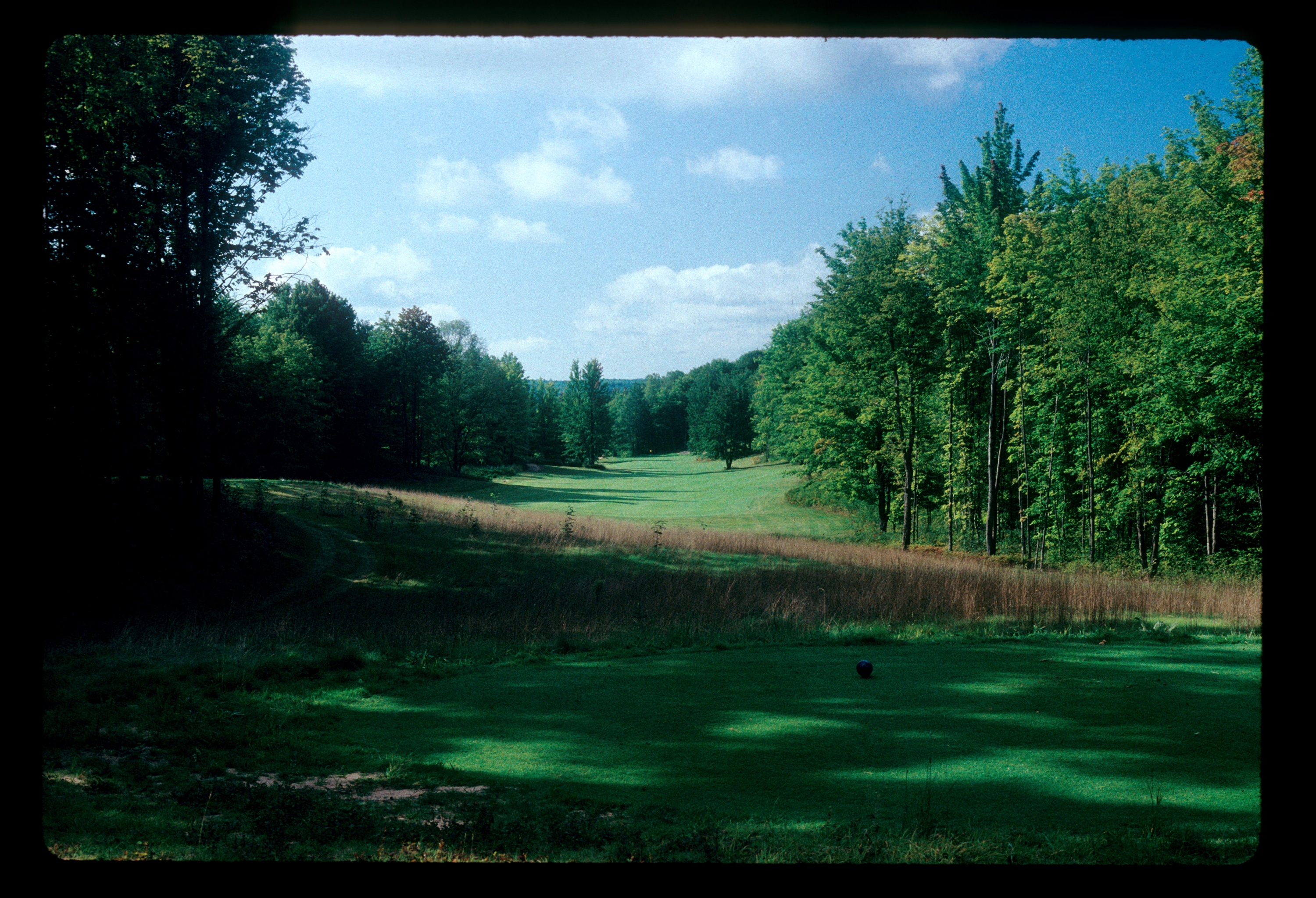RGD's Best Holes
We don't believe in signature holes. Every hole is an important part of the whole.
One of the most telling signs of the state of modern golf architecture is how little architects talk about their individual golf holes. We are constantly asked what is the “signature hole” on our courses, a euphemism for “which hole will take the best photograph so we can use it in all of our advertising until you are sick to death of seeing it?” Apart from talk of signature holes, nearly everything written about new courses are general platitudes, with little detail about whether the course contains outstanding holes or not.
I’ve heard a few designers claim they have built “18 signature holes” on a course. That’s not our goal at all. Our goal is to build good to great holes of every length and shape, to make it hard for people to decide what is the best hole on the course. We don’t try to make every hole top the last one, but there’s no such thing as a throwaway hole in our vocabulary. Here are a few of our favorites:
Par Threes
|
4th Hole - Riverfront - 165 yards, par 3
|
The entire Riverfront course lies on ground with elevations between 12 and 22 feet, but several fingers of tidal marsh cut back into the property and come into play on more than half the holes. The par-3 fourth remains the most dramatic because both tee and green sit well out on peninsulas, buffered from the homes which line the majority of the course. |
|
7th Hole - Barnbougle Dunes - 120 yards, par 3
|
Our “Little Devil” can be so frightening into the prevailing wind that you have to consider playing short and right of the green for safety -- on a hole of just 120 yards!! The green is small and crowned, a terrifying bunker eats into the left side, and there is a deep valley just at the back so it’s not the kind of hole where you take an extra club or two to be sure of getting home. Indeed, it’s the shorter holes on windy links courses which are the ultimate test, because the player who has mastered the knockdown shot is at a great advantage over the player hitting a lofted iron up into the breeze. |
|
9th Hole - Stonewall (North) - 180 yards, par 3 |
From the top of one ridge to the top of another, this is as natural a hole as any we’ve built … all we had to do was build a couple of bunkers into the face of the hill in front of the green, as a bit of buffer from the rocky stream hidden just in the edge of the woods. |
|
13th Hole - Barnbougle Dunes - 206 yards, par 3
|
One of the holes I would have liked to see most was Dr. MacKenzie’s wildly undulating par-3 green at Sitwell Park, England, which his client there did not appreciate and changed after only a few years. In Tasmania, we had a chance to build a similar green in a wild bowl in the sand dunes, and we went for it. The green is massive and not too hard to hit if that’s your only goal, but it takes a controlled shot to give yourself a chance for a two instead of leaving yourself a circus putt to try and lag close enough for par. |
|
15th Hole - High Pointe - 182 yards, par 3 |
My own feeling is that the popular form of par-3 holes featuring a drop shot from a high tee are overrated, but this one is a personal favorite. The routing is working back down a big hill and this green backs up to a second drop-off, so you have to guard against going long or to the right. Then, a large fronting bunker forces you to make a confident club choice or to play way left to the only open entrance on the green. |
|
17th Hole - CommonGround - 255 yards, par 3
|
Our public course in Denver was built for an old-school budget to keep it affordable, and the result is a course with smaller bunkers that looks more like Donald Ross’ work than most of what you see in the golf magazines today. This is particularly true of the long par-3 17th, playing up a slight rise to a green that crowns off to an open right side, while guarded on the left by a long diagonal bunker. No lead in a match can be secure until the player in charge is safely in for a three here. |
Short Par Fours
|
1st Hole - Old Macdonald - 340 yards, par 4
|
For me, the key to an opening hole is a bit of forgiveness -- I seldom hit balls on the range before playing, so I don’t want to build a hole that’s too exacting right out of the box. I don’t mind a long par-4 opener where the average golfer would usually expect a bogey anyway, but I think I prefer a short par-4 as long as it gives you room off the tee. Our latest opener may be one of our best. There’s nearly 100 yards of fairway from left to right, although the strong player might prefer the high plateau which is the right third of it, affording a better look at the green. If you go left, your view is partially obscured by a mounded bunker short and left of the putting surface. In keeping with the theme of Old Macdonald, the green is a version of Macdonald’s “Double Plateau,” with the left wing and back right of the green raised a couple of feet above the rest. |
|
4th Hole - Barnbougle Dunes - 299 yards, par 4
|
Normally I would be hesitant to build a par 4 at under 300 yards, but here we were working in meters, and didn’t think about the conversion! The green site is an odd-shaped bowl up in the dunes. From the tee there are three potential plays. A full-blooded drive (into the prevailing wind) over a huge bunker in the shoulder of a dune, if successful, might bounce down into the green. A short tee shot below the bunker will leave a mostly blind pitch into the green. Or, you can try to play to the ramp which goes around the left side of the bunker, a decent option if the flag is in the front half of the green, but not so when the flag is back left, hidden by a bigger dune. |
|
8th Hole - St. Andrews Beach - 362 yards, par 4
|
A beautiful short par-4 from a high tee, over some deep fairway undulations and bending to the left around a small hill. The small green falls slightly away from the player and from a grove of trees to its right, so a tee ball tight to the left side gives a better chance to control the approach shot. |
|
7th Hole - Ballyneal - 347 yards, par 4
|
This short par-4 features the most unusual green we’ve ever built, though not the most difficult. The left side of the green is mowed partway up a very steep slope, with fairway grass above that; while on the right side two bunkers eat into the margin of the green, giving it something of an “E” shape. If you wind up on the wrong arm of the “E” it is possible to putt off the bank on the left to where the flag is, an option which is also extended to approach shots from the far right of the fairway. |
|
12th Hole - Ballyneal - 377 yards, par 4
|
Here might be the most severe green we’ve ever built. There are two separate terraces on the right hand side of the green, close to deep bunkers on that flank, and a steep 3-foot drop down into a bowl on the left half of the green. Putting from the right side of the green down into the bowl may make it impossible to get the ball close to the hole, and that is the point … because the player should never leave his approach shot on the right when he had the bowl to play into. Combine this with the great natural contours in the fairway, which make it hard to stay up on the left side for a better angle to the green, and you have one of the most intriguing holes we’ve built. |
|
6th Hole - Pacific Dunes - 316 yards, par 4
|
This is probably the least interesting stretch of property at Pacific Dunes, which just goes to prove that holes of this length are automatically interesting because of the expectations they come with. There is an ocean of fairway to hit into on the left, but the very skinny green sits on a precipice above an 18-foot deep bunker to the left, so any approach shot from that side is fraught with danger. Position off the tee is rewarded with a less frightening prospect and even the chance of a three, but those who try to overpower the hole usually learn a hard lesson. |
|
2nd Hole - Stone Eagle - 402 yards, par 4 |
Normally I’m not a big fan of sharply uphill holes because the visuals are so bad -- you are too far below the green to see any of the surface, so all you see is a flag flying against the sky. However, at Stone Eagle several uphill holes play straight toward a massive rocky mountain face, and watching a tee shot silhouetted against that backdrop is one of the most majestic views I’ve seen in golf. This straightaway par 4 plays right out of a narrow chute between rock outcroppings. The fairway is much wider than it looks from the tee, but if you stray right of center, your second shot will have to be up and over a high shoulder full of bunkers about thirty yards short of the green, which distracts from the annoyance of not being able to see the green surface. There is a shelf along the right of the green and a lower tier on the left which is more clearly seen from the fairway. |
Long Par Fours
|
7th Hole - Rock Creek - 470 yards, par 4 |
This sharp dogleg left crosses the most undulating part of our Montana ranch property. Normally I would traverse this kind of ground with a par-3 hole, because it’s difficult to find a large landing area for drives in rugged terrain, but the next hole was already set as a par-3 crossing the creek so we wanted to find a longer hole here. The tee-shot landing zone runs sharply downhill along a ridge line; you have the choice of playing a short tee shot over a shoulder on the left and trying to scoot the ball on down the hill, or taking a driver and playing to the far end of the ridge. The second shot turns almost 90 degrees left, playing around or over a rock outcropping on the inside corner of the hole, to a pocket green with a severe left-to-right approach. |
|
7th Hole - Pacific Dunes - 443 yards, par 4
|
This hole features one of the best green settings I’ve ever found, a small patch of dunes set back in pine trees. There are some sharp, low moguls to play over about fifty yards short of the green, and then a series of bunkers cut into the left-hand side of the approach all the way up to the most undulating green at Pacific Dunes. |
|
12th Hole - Cape Kidnappers - 430 yards, par 4 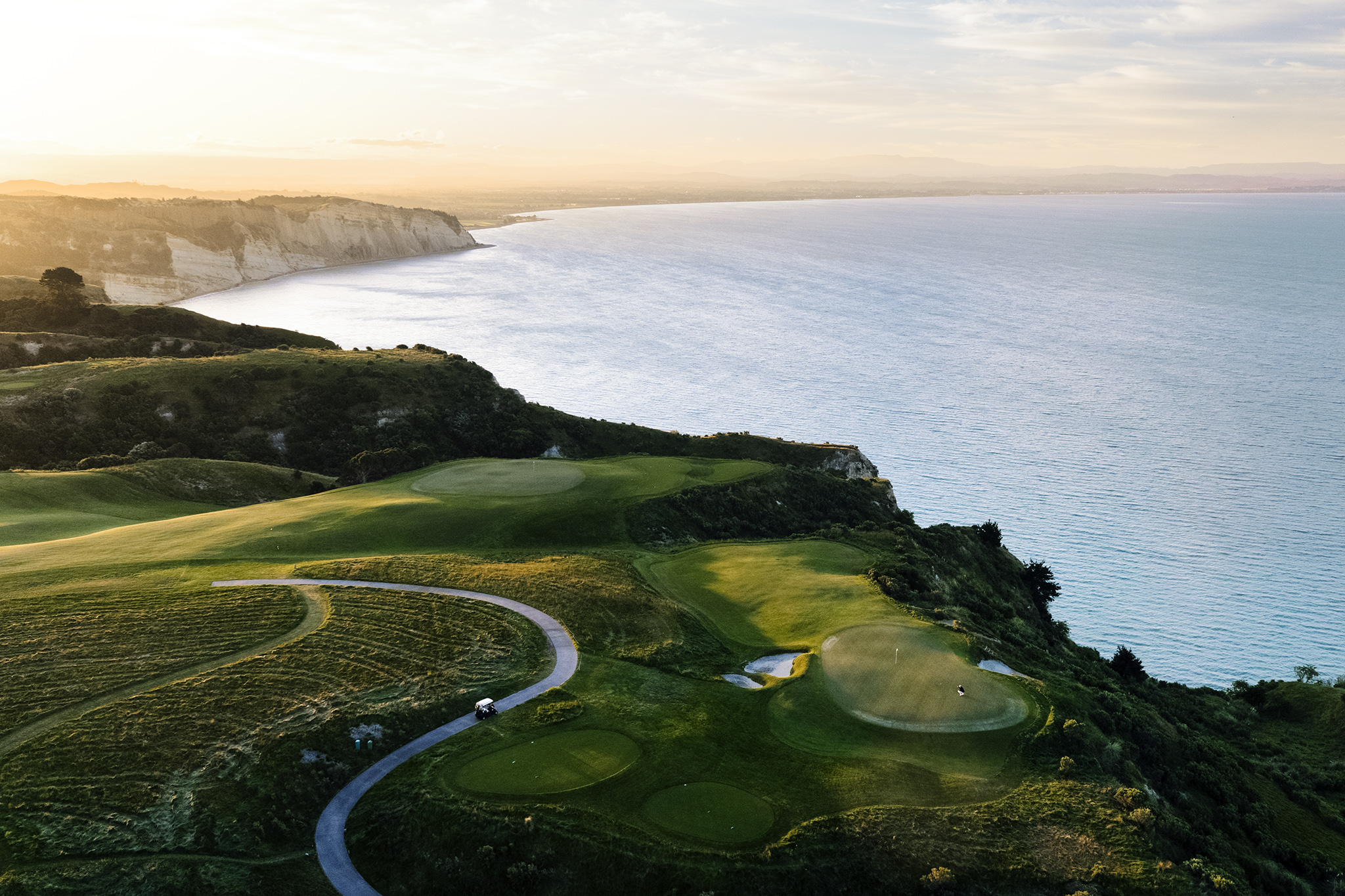 |
This green is the lowest on the golf course, but it’s still 400 feet above the background of Hawkes Bay, where the waves rolling into the bay below look like ripples on a pond. The green floats out on the horizon tethered to the fairway by a narrow bridge of fairway, with a steep fall to the left and a gentler valley to the right. Even though the tee for the next hole (the par 3 13th playing towards the camera) is just behind and below this green, from the fairway you see nothing over the tight grass of the putting surface but the bay beyond, making for an intimidating approach if there ever was one. |
|
13th Hole - High Pointe - 434 yards, par 4 |
This was the first hole we built on my first solo design, and we came out of the gate quickly. From a high tee the hole fights its way across a steeply right-to-left landing area, and then over a shoulder at the front left to a unique green in a natural saddle. The right side of the putting surface works its way sharply up into a hill at the back, while the left side falls away to a lower back left tier that provides for all sorts of creative short game play. |
|
12th Hole - Quail Crossing - 410 yards, par 4 |
It doesn’t take a beautiful green site to make a great hole, just an interesting bit of contour. This green sits atop an old loading station for a coal mine railway … the upper right of the green was raised to load the cars, while the lower left of the green (guarded by a fronting bunker) is set at the original grade, leaving the chance to play your approach off the bank in the green instead of carrying the bunker directly. |
|
18th Hole - Stonewall (Old) - 458 yards, par 4
|
We’ve built quite a few good finishing holes in recent years, but this is still my favorite because it was built with the clubhouse behind as an integral part of the golf hole. The green sits just close enough to the buildings that a walled-off courtyard and a stone outbuilding are potentially in play at the back left, as you approach down a steep hill with bunkers short of the green on the right. The older buildings make the hole look like it’s been there forever. |
Par Fives
|
3rd Hole - Pacific Dunes - 499 yards, par 5
|
You hardly ever see a par five playing under 500 yards anymore, but into the prevailing summer wind, the third at Pacific Dunes will test even the best players. The angle of the green, from left to right behind a very deep bunker, makes you choose right on the tee whether you’re trying to get home in two or not. If you do want to get home, you have to drive to the left of a couple of fairway bunkers to get an open approach; but if you’re a mere mortal, it’s probably better to drive to the right, which gives you a wider corridor to get your second shot back to the left to set up the approach. Only after all that do you walk up to the green set in the dunes and realize you’re right on the brink of the Pacific Ocean, looking through a notch to the rocks off Five Mile Point. |
|
4th Hole - Tumble Creek - 595 yards, par 5 |
Most designers make little changes here and there throughout the course, but I would prefer to make one BIG change on one hole so that others require no work at all. I’ve made the analogy to a baseball pitcher trying to throw a no-hitter … if we make changes to 18 holes we have to make it look seamless 18 times, but if we confine our changes to just a few holes we stand a much greater chance of being able to repair each case seamlessly. The par-5 fourth hole at Tumble Creek is the best example of this program. The green sits atop a sixty-foot high ridge, which had to be surmounted somehow in the routing. Different proposals had been made by the land planner, most of which involved very long green-to-tee transitions, and giving up a couple of good natural green sites that came before it. Instead, we solved the problem with earthmoving: we cut the ridge by about twenty feet in the landing area for the second shot, and raised the landing area for the tee shot by the same amount, so that the elevation is overcome in two, manageable twenty-foot steps. We moved 80,000 cubic yards of earth on this one hole, but that represented 95% of the earthwork on the golf course (apart from digging irrigation ponds), because it allowed us to build holes before and after it which required no earthwork or blending work at all. And in spending all that time on the fourth hole, it wound up being the most dramatic and talked-about hole on the golf course … a great par-five with a very daring option for long hitters, while giving relatively straightforward results for the majority willing to tackle the hole in three steps. |
|
6th Hole - The Renaissance Club - 590 yards, par 5 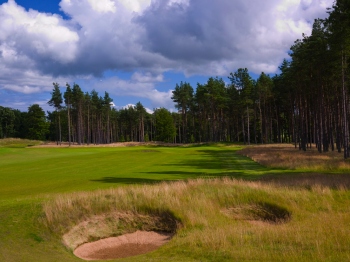 |
On this long, downwind par five, we left a stand of pine trees on the inside corner of the dogleg right. To really shorten the hole, long hitters would have to take their drives up over the trees, a very dangerous play -- while short hitters should give the trees a wide berth so they don’t block the proper line for the second shot. |
|
8th Hole - Aetna Springs - 530 yards, par 5
|
Here the driving hazard is the confluence of two small streams, right where the long hitter’s landing area should be. Most golfers will just drive safely short of the stream and play it as a three-shot hole, but the long hitter may be tempted to play to a patch of fairway in between the streams on the right, which would put him within range of the green with a long second shot. The ground-level green is unguarded by bunkers, but it’s the smallest we’ve ever built -- barely 2,500 square feet -- and its narrow dimension makes any pitch from wide of the green a tricky shot. |
|
10th Hole - Rock Creek - 600 yards, par 5
|
Sometimes a golf hole just screams out from the topographic map, and when you’ve got thousands of acres of Montana ranch land to choose from, you have to find a great place to start. Here, it was a high bluff green site overlooking Rock Creek that caught my attention … at first glance I thought it would be perfect for a short par-4, but then I saw I could trace the line back another 280 yards and still have visibility to a plateau landing area. Big fairway bunkers left off the tee and to the right of the green make perfect strategic sense for the long hitter, while the double-dogleg route gives the average player a lot of room but requires a precise approach from the floor of the valley up to the green. |
|
10th Hole - Black Forest - 565 yards, par 5
|
This straightaway par five down a long, shallow valley requires you to pass between a gate of maple trees 350 yards from the back tee. If the tee shot is off line, the second shot must be shaped around a tree so as not to get lost in the tree line on the opposite side of the fairway; or, you can play a shorter second shot just between the trees, and leave yourself a longer third. |


